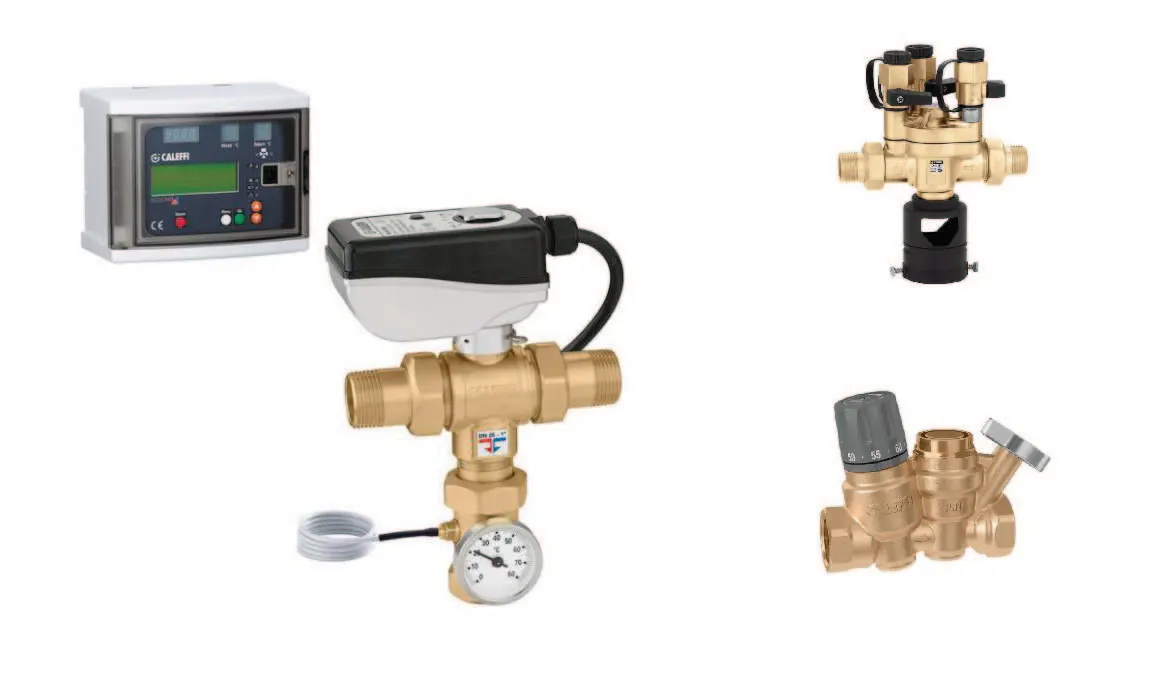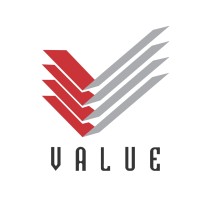
Electronic mixing valve with programmable thermal disinfection
Function
The electronic mixing valve is used in centralised systems that produce and distribute domestic hot water. Its function is to guarantee and maintain the temperature of the domestic hot water delivered to the user when there are variations in the temperature and pressure of the hot and cold water at the inlet or in the draw-off flow rate. This particular series of electronic mixing valves is equipped with a specific regulator that controls a set of programs for circuit thermal disinfection against Legionella. It also allows checking that the thermal disinfection temperature and time are actually reached and means the appropriate corrective action can be taken. All the parameters are updated every day and logged, with temperatures recorded every hour. Depending on the type of system and habits of the user, it is possible to program temperature levels and operation times in the most appropriate manner.
Product range 6000 series Electronic mixing valve with programmable thermal disinfection.
Threaded version. sizes 3/4”; 1”; 1 1/4”; 1 1/2”; 2” 6000 series Electronic mixing valve with programmable thermal disinfection. Flanged version. sizes DN 65 and DN 80
Technical specifications
Valve body Materials: Body: - threaded version: brass UNI EN 12165 CW617N - flanged version: dezincification resistant alloy “LOW LEAD” EN 12165 CW724R Ball: - 3/4”–1 1/4” versions: brass EN 12164 CW614N, chrome plated - 1 1/2” - 2” versions: brass EN 12164 CW614N, chrome plated, POM - flanged versions: stainless steel AISI 316 Hydraulic seals: threaded versions: EPDM - flanged versions: NBR Nominal pressure boby: PN 16 Maximum working pressure: 10 bar Maximum differencial pressure: 5 bar Maximum inlet temperature: 100 °C Temperature gauge scale: 0–80 °C Hot and cold water connections: 3/4”–2” M with union Mixed water connection: 3/4”–2” F Flanged connections: DN 65 and DN 80, PN 16 can be coupled with counterflange EN 10921
Actuator for threaded version
Electric supply: 230 V (AC) - 50/60 Hz directly from the regulator Power consumption: 6 VA Protection cover: self-extinguishing V0 Protection class: IP 65 Ambient temperature range: -10–55 °C Supply cable length: 0,8 m
Actuator for flanged version
Electric supply: 230 V (AC) - 50/60 Hz directly from the regulator Power consumption: 10,5 VA Protection cover: self-extinguishing V0 Protection class: IP 65 Ambient temperature range: -10–55 °C Supply cable length: 2 m
Digital regulator
Material: Housing: self-extinguishing ABS, white RAL 1467 Cover: self-extinguishing SAN, smoked transparent Electric supply: 230 V (AC) 50/60 Hz Power consumption: 6,5 VA Adjustment temperature range: 20–85 °C Disinfection temperature range: 40–85 °C Ambient temperature range: 0–50 °C Protection class: IP 54 (wall mounting) (Class II appliance) Contact rating: Mixing valve control: 1 A / 250 V Alarm relay (R2): 5(2) A / 250 V Relay 1, 3, 4: 10(2) A / 250 V Fuses: 1 (main): 80 mA Fuses: 2 (mixing valve): 1 A Charge reserve: 15 days in the event of electric supply failure, with a 3-cell rechargeable 150 mAh buffer battery Enabled by microswitch. Battery recharging time: 72 h Conforms to Directives: CE
Temperature probes
Material: Body: stainless steel Type of sensitive element: NTC Working temperature range: -10–125 °C Resistance: 10000 Ohm at 25 °C Time constant: 2.5 Max. distance for flow or recirculation probe: 150 m with 2x1 mm2 cable 250 m with 2x1,5 mm2 cable
Legionella-distribution temperature
In central systems that produce hot water with storage for domestic purposes, in order to prevent the proliferation of dangerous Legionella bacteria, the hot water must be stored at a temperature of at least 60 °C. At this temperature it is certain that the proliferation of the bacteria that cause Legionnaire's disease will be totally inhibited. These temperatures, however, are too high for direct use by the user; water at these levels can cause severe burns. It is therefore necessary to reduce the temperature of the hot water distributed to the user to a lower value suitable for use. Moreover, not only the storage but also the entire distribution network requires thermal disinfection at regular intervals. Otherwise the bacteria would develop quickly in there too. In view of the above, it is therefore necessary to use an electronic mixing valve able to: · reduce the temperature of the distributed water to an adjustable value which is lower than the storage temperature · keep the mixed water temperature constant despite any variation in inlet temperature and pressure, or in the drawn-off flow rate. · program thermal disinfection with a higher temperature than the regulation value, within the necessary time and during periods with less frequent consumption (night-time).
Thermal disinfection
The adjacent diagram shows the behaviour of Legionella Pneumophila bacteria as the temperature conditions of the water containing the bacteria vary, in laboratory cultures. To ensure correct thermal disinfection, it is necessary to go up to values of at least 60 °C.
Energy saving
Energy savings are governed in Italy by Presidential Decree no. 412/93 making it compulsory to use mixing valves on domestic water systems with storage, which are not otherwise regulated, in order to limit the temperature of the water at the inlet of the distribution network to 48 °C with a tolerance of +5 °C. The purpose of limiting the temperature is to reduce passive thermal losses through the distribution network as much as possible and to prevent the delivery of water at a higher temperature than necessary.
Reference documents
The new “Guidelines for the Prevention and Control of Legionella” were published on May 7, 2015 with the aim of bringing together, updating and integrating in a single text all the indications included in the previous national and regulatory guidelines and replacing them in their entirety. In addition to the 2000 Guidelines, the 2005 guidelines for touristreceptive and spa facilities and those for analysis laboratories were incorporated.
Applications
The electronic mixing valve is typically used in central systems serving hospitals, nursing homes, sports centres, shopping centres, hotels, campsites and boarding schools. In these structures with their collective use, it is more than ever necessary to control and prevent legionnaire’s disease in a programmed manner, managing the disinfection times in the best possible way







